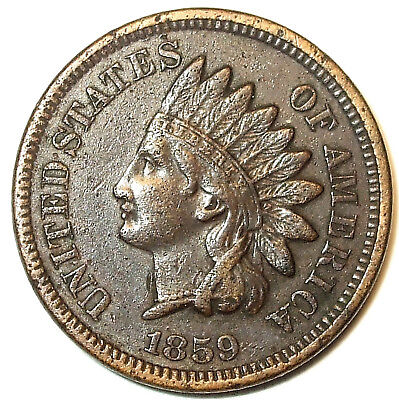The Indian Head Cent, a popular and widely collected United States coin, was minted from 1859 to 1909. It represents a significant era in American numismatics and offers insights into its cultural and economic history. This blog post explores the development, design, production, and eventual replacement of the Indian Head Cent, its impact on coin collectors, and its role in everyday transactions.

Origins and Design
The Indian Head Cent was introduced in 1859 when the United States sought to innovate its coinage system. The coin’s designer, James Barton Longacre, was the Chief Engraver of the United States Mint. Longacre’s design features the profile of Liberty wearing a Native American headdress, which was intended to symbolize the unity of the American people.
- 1859: The first year of production featured a laurel wreath on the reverse side.
- 1860-1864: The reverse design was changed to an oak wreath with a shield at the top.
Material Composition and Changes
From 1859 to 1864, the Indian Head Cent was struck in a copper-nickel alloy, known as “white cents. ” The alloy consisted of 88% copper and 12% nickel. In 1864, the coin’s composition was changed to bronze, comprised of 95% copper and 5% tin and zinc, to save on costs and improve coinage efficiency.
| Year Range | Composition |
|---|---|
| 1859-1864 | Copper-nickel (88% copper, 12% nickel) |
| 1864-1909 | Bronze (95% copper, 5% tin and zinc) |
Minting and Circulation
The Indian Head Cent was minted primarily at the Philadelphia Mint. During its 50-year production run, over 1.8 billion coins were struck. Due to its convenient denomination and widespread availability, the cent became a staple in daily commerce.
Significant Varieties and Collectibility
Several notable varieties of the Indian Head Cent exist, contributing to its popularity among collectors. Some of these include:
- 1859: The unique one-year design with a laurel wreath.
- 1864: The introduction of the bronze composition and the “L” mint mark on the ribbon.
- 1877: Known for its low mintage, making it highly sought after.
- 1908 and 1909: The only years the coin was minted at the San Francisco Mint, marked with an “S.”
Replacement and Legacy
In 1909, the Indian Head Cent was replaced by the Lincoln Wheat Cent, commemorating the centennial of Abraham Lincoln’s birth. The change reflected a shift in the United States Mint’s approach to coin design, which focused more on historical figures and events.
The Indian Head Cent’s legacy endures in numismatic circles, where it remains a favorite among collectors. Its historical significance, coupled with its various design modifications and material changes, makes it an intriguing subject for study.
Conclusion
The Indian Head Cent is a remarkable artifact from a transformative period in American history. Its evolution from a copper-nickel composition to bronze, along with its iconic design, illustrates the dynamic nature of U.S. coinage during the 19th and early 20th centuries. Collectors and historians alike continue to appreciate the Indian Head Cent’s historical value and contribution to numismatics.
For further reading, consider the following resources:








Leave a Reply